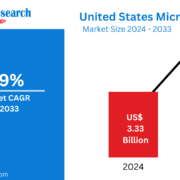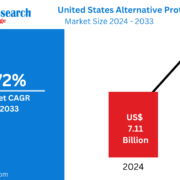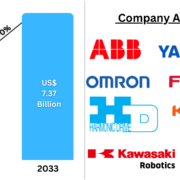The Essential Guide to ISO 45001 Migration Lead Auditor Training
In the fast-paced world of workplace health and safety, being prepared isn’t just about ticking boxes—it’s about truly transforming how organizations approach employee well-being, risk management, and compliance. If you’ve found your way here, chances are you’re considering ISO 45001 Lead Auditor Training to guide your organization through the complexities of migration and certification.
But here’s the thing: ISO 45001 is more than just a standard. It’s a mindset shift—a proactive approach that puts people at the center of organizational safety, ensuring not just compliance, but a culture of continuous improvement. As a lead auditor, your role is pivotal in making that shift happen. You’ll need the right mix of technical knowledge, strategic insight, and people skills to manage the migration, lead the audit, and promote ongoing progress. Sounds like a big responsibility, doesn’t it? Don’t worry. Let’s break it down together.
What is ISO 45001? And Why Does It Matter?
Before jumping into the nuts and bolts of lead auditor training, let’s take a step back. If you’re still a bit fuzzy on ISO 45001 itself, don’t worry; you’re not alone.
ISO 45001 is an international standard that sets out the criteria for an Occupational Health and Safety (OHS) management system. Think of it as the blueprint for organizations to ensure they are creating a safer, healthier work environment. It’s a tool for managing risk and preventing accidents, injuries, and illnesses in the workplace. But the real power of ISO 45001 lies in its holistic approach. It’s not just about following rules—it’s about embedding safety into the organization’s culture and day-to-day operations.
Now, let’s get to why this matters. When organizations align with ISO 45001, they’re not just improving safety protocols—they’re potentially saving lives, reducing risks, and creating a sustainable workplace culture. This is no small feat, and it’s exactly why certified lead auditors play such a crucial role. They’re the ones who help organizations understand how to meet the standard and, just as importantly, how to maintain it.
So, What Does ISO 45001 Migration Entail?
Moving from an existing OHS management system to ISO 45001 isn’t a simple flip of a switch. It’s a process—one that involves assessment, planning, implementation, and continuous review. If your organization is transitioning from an older version of OHSAS 18001 (the predecessor to ISO 45001), the migration will require a careful gap analysis to determine what changes need to be made. You’ll need to get familiar with how ISO 45001 differs in terms of leadership commitment, worker participation, risk management, and performance evaluation.
For the lead auditor, this means understanding not only the technicalities of ISO 45001 but also the specific challenges an organization may face during the migration. You’re essentially becoming the bridge that connects knowledge to action. Whether you’re auditing or guiding organizations through this transition, you’ll be responsible for evaluating how well the system is being integrated and ensuring that it leads to measurable improvements.
Why ISO 45001 Lead Auditor Training is Crucial for Successful Migration
Here’s the big question: Why does training matter so much when it comes to migration? After all, anyone can read the standards, right? But here’s the thing—becoming an effective lead auditor requires more than just knowing the rules. It’s about understanding the nuances of the standard, the intricacies of human behavior, and how to influence and lead people to action.
ISO 45001 Lead Auditor training is designed to equip you with all the tools you need. From understanding the theoretical underpinnings of the standard to mastering the technical and interpersonal skills required to lead a successful audit, this training is a comprehensive deep dive into how to be a strategic player in the migration process.
So, what can you expect to learn in this training? Here’s a sneak peek:
In-Depth Knowledge of ISO 45001
You’ll gain a comprehensive understanding of ISO 45001’s clauses and how they relate to workplace health and safety. The focus is on not just what’s required but why it matters to the long-term success of an organization’s safety culture.
Auditing Techniques and Methodologies
Effective auditing isn’t just about checking boxes on a checklist. It’s about interviewing stakeholders, gathering evidence, analyzing processes, and identifying areas of improvement. This part of the training will teach you how to do that systematically and ethically.
Risk-Based Thinking
iso 45001 migration lead auditor training emphasizes a risk-based approach, which means you’ll need to understand how to assess and prioritize potential risks in a workplace environment. Training helps you develop the mindset to identify hazards before they become problems.
Leadership Skills
As a lead auditor, you will be a key player in leading teams and driving change. You’ll learn how to communicate findings clearly and diplomatically, and how to ensure that senior leadership and employees are fully engaged in improving OHS performance.
Legal and Regulatory Considerations
Understanding the legal framework surrounding workplace safety is critical. During training, you’ll review the key legislation and regulations that impact OHS management systems, helping you stay compliant throughout the migration process.
The Benefits of Becoming an ISO 45001 Lead Auditor
Okay, so you’re probably wondering: “Why bother becoming an ISO 45001 lead auditor in the first place? What’s in it for me?”
Well, first off, this is a certification that opens up a world of possibilities. Whether you’re aiming to become an internal auditor, or lead auditor for a certification body, this qualification gives you credibility, respect, and the ability to influence safety practices at the highest levels.
But it’s not just about career perks. As a lead auditor, you’re playing a pivotal role in transforming organizations. You’re ensuring that people go home to their families safe every day. And let’s face it, that’s incredibly rewarding.
Beyond Migration: Continuous Improvement and Auditing
Let’s not forget that the ISO 45001 journey doesn’t stop after migration. Once the standard is in place, your role as an auditor shifts to ensure that the system continues to evolve. It’s about continual improvement—monitoring, evaluating, and making adjustments as needed.
It’s a bit like maintaining a car. You can get the engine running, but if you don’t keep up with the oil changes, tire rotations, and regular check-ups, you’re bound to run into trouble. Similarly, your role as an auditor doesn’t end when the migration is complete—it’s an ongoing responsibility to ensure that the system remains robust and effective.
Final Thoughts: A Career That Makes a Difference
Becoming an ISO 45001 lead auditor is more than just a career choice. It’s a commitment to improving workplace safety and driving positive change within organizations. If you’re passionate about people’s well-being, want to make a real difference, and are ready to take on a leadership role in health and safety, this could be the career path for you.
In a world where workplace safety is more critical than ever, the need for skilled ISO 45001 lead auditors is growing. Whether you’re guiding a company through its migration journey or helping maintain the integrity of its safety culture, your expertise will be invaluable. So, are you ready to take the next step?







